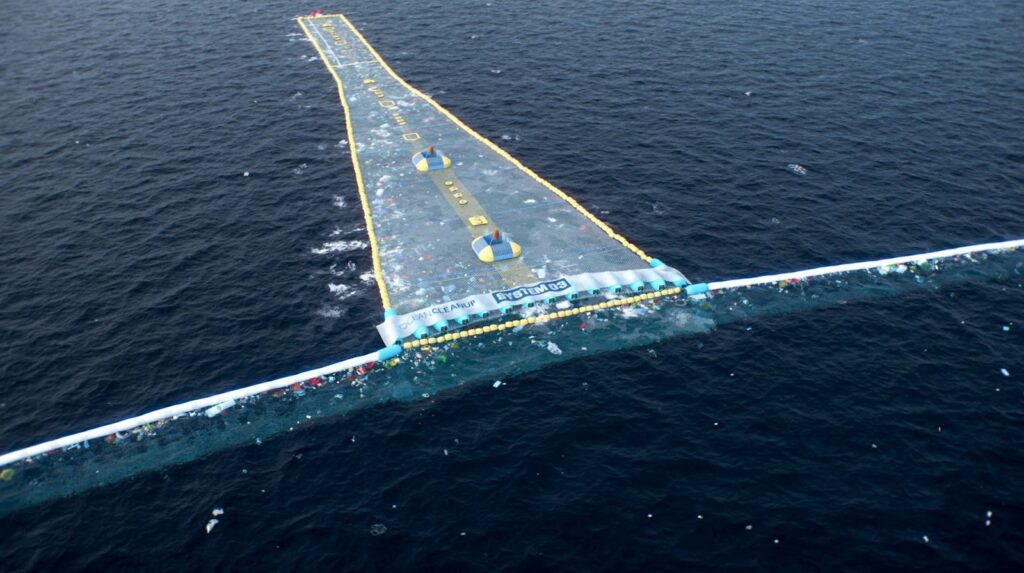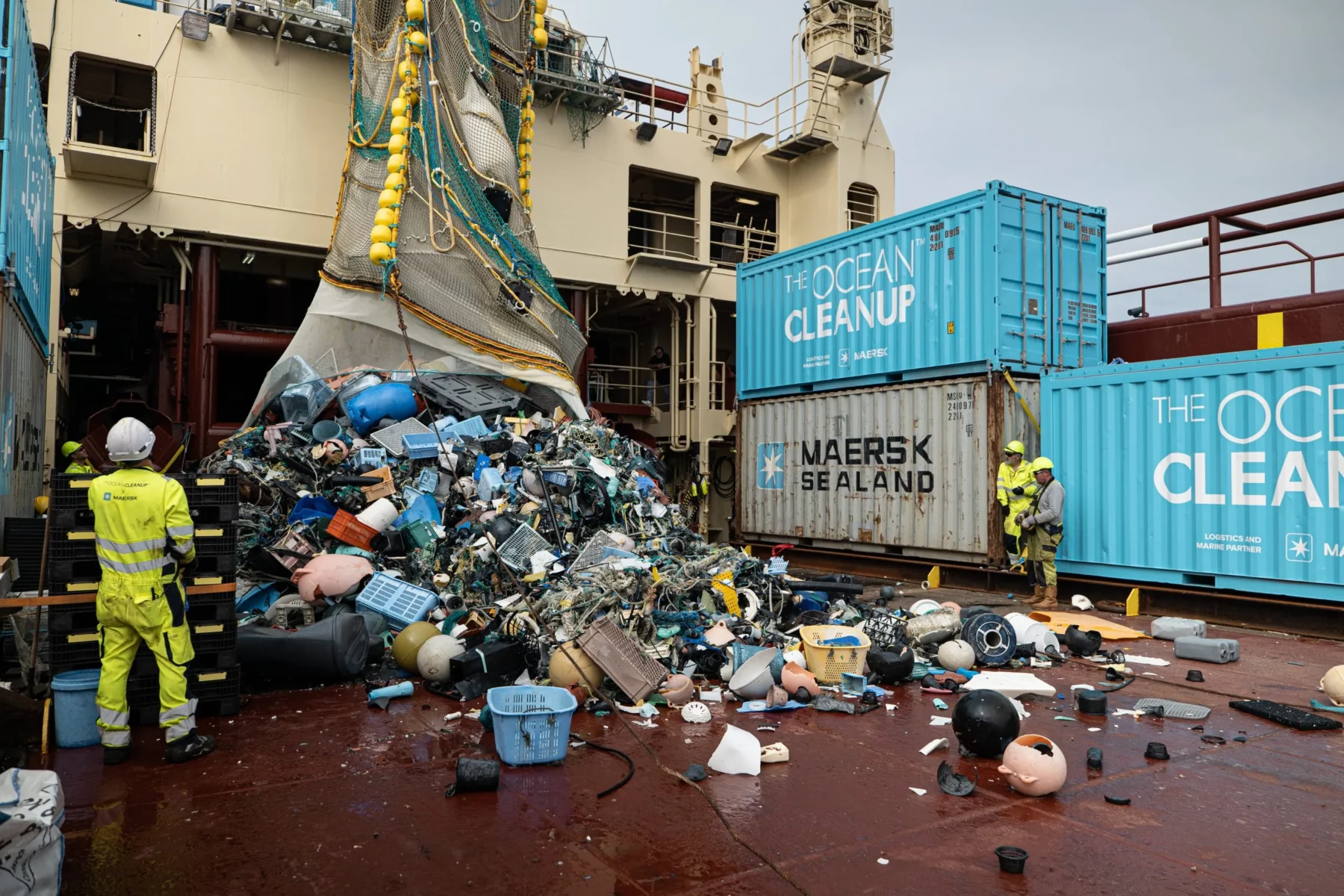What do you call a lump of garbage that weighs the same as two Boeing 737s? Well, it already has a name: the Great Pacific Garbage Patch (GPGP), and it is the site of the latest large-scale cleanup effort by sustainability nonprofit The Ocean Cleanup.
The organization recently gave an exciting update on the status of a cleanup initiative that has been in operation since August 2021, stating that the sum of all trash collected from the patch has exceeded 100,000 kg (over 200,000 pounds). It will be the first of many, but it is nevertheless an exciting first step in finally addressing the growing issue of trash buildup in our oceans.
The GPGP refers to a lump of accumulated trash off the coast of California. The scale of the patch is massive.
While efforts like this from The Ocean Cleanup have made more progress in breaking it down than ever before, they would need to repeat that operation roughly 1,000 times before the patch is fully depleted.

“I’m proud of The Ocean Cleanup team for crossing this milestone, which is all the more remarkable considering System 002 is still an experimental system,” said Boyan Slat, CEO and founder of the organization. “System 002” refers to the most recent iteration of their prototypical method for analyzing the patch and determining the most effective extraction routes.
The past year’s success is only the beginning, as Slat says the positive data will pave the way for a bigger and better system.
“Now our technology is validated, we are ready to move on to our new and expanded System 03, which is expected to capture plastic at a rate potentially 10 times higher than System 002 through a combination of increased size, improved efficiency, and increased uptime,” he said.
The basis of the effort that began last August was a 2018 study conducted by the nonprofit. It was determined that the GPGP was anywhere from 14 to 16 times larger in diameter than the world had previously assumed, occupying a section of ocean roughly 1 million square miles in size. What was in the giant mass was even more interesting. The majority of the debris inside the blob was more than 5 cm in length, with a whopping 46% of all trash being lumps of discarded fishing nets from commercial operations. The smaller stuff was mainly microplastics, making up an eye-popping 94% of the 1.8 trillion individual pieces of trash in the patch.
Probably the most chilling aspect of 2018’s findings was the conclusion. With ocean plastic pollution on the rise everywhere, the GPGP is growing exponentially, far outpacing surrounding waters. Slat credits the study for kicking the nonprofit’s cleanup efforts into high gear over the last four years. “Onwards to adding another zero behind our catch figures!”

The Ocean Cleanup is one of many American organizations executing plans of action for addressing the growing patch.
Another recent 45-day expedition netted 200,000 pounds of trash from the GPGP, carried out by the Ocean Voyages Institute nonprofit.
Based in Sausalito, CA, it sailed a 132-foot cargo ship near Honolulu, where it found the giant, seemingly endless mass of floating plastic.
Besides the fishing nets, participants reported a myriad of trash forms, including children’s toys, lawn chairs, and plastic food containers. Though there was GPS tracking data used in this process as well, perhaps a future scenario could occur where The Ocean Cleanup’s System 03 technology could be there to assist an entire wave of future efforts.





